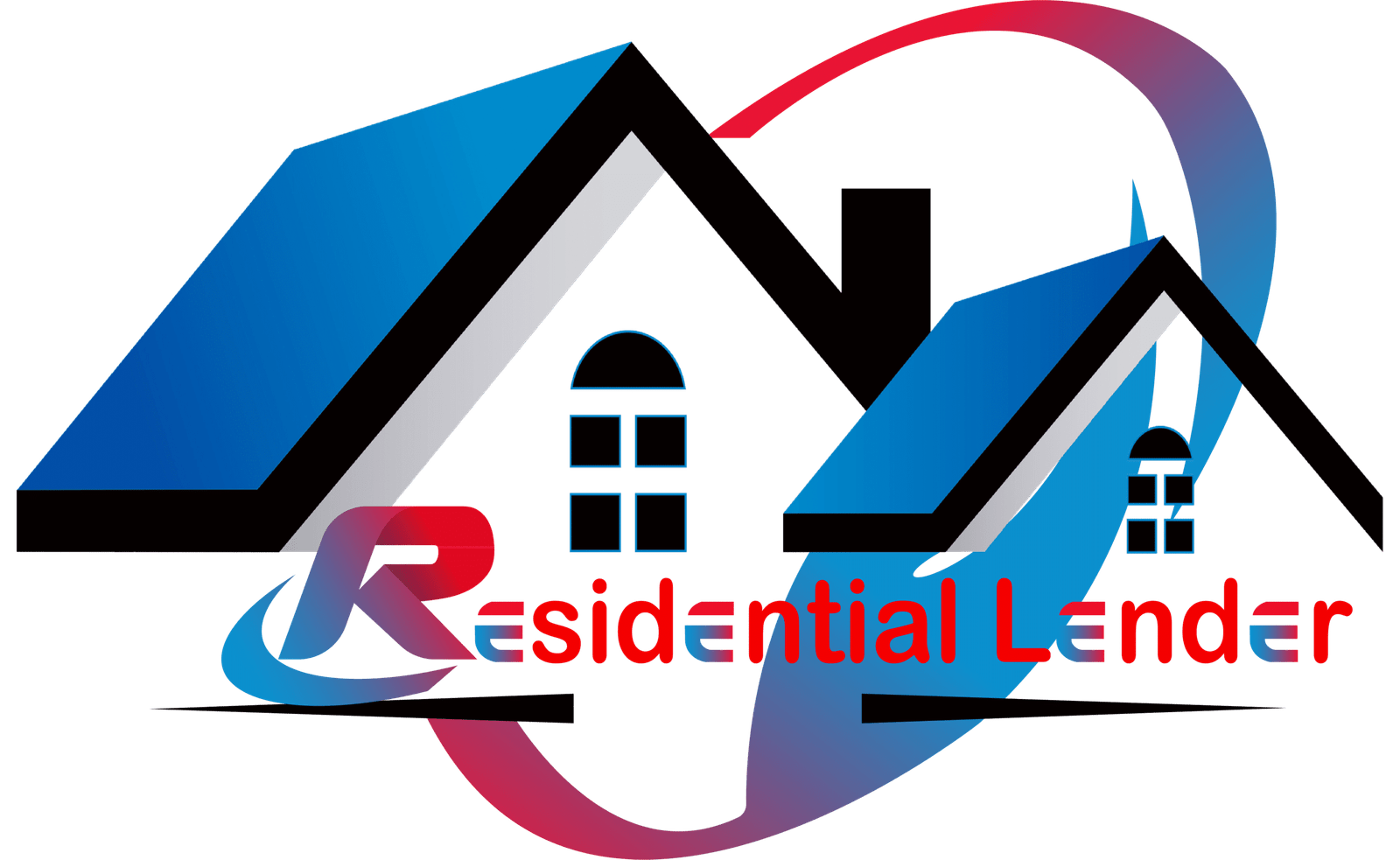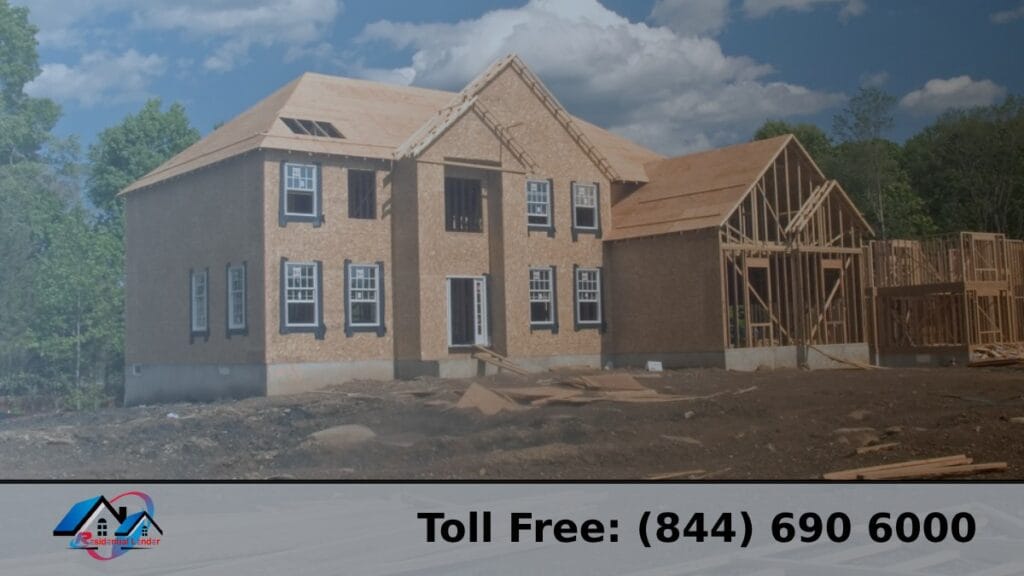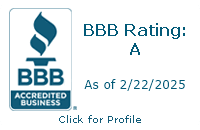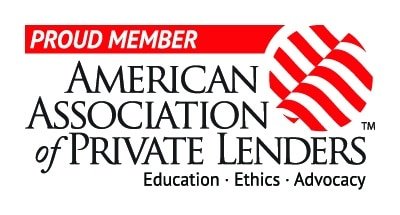Visualize finding the perfect business property. It has excellent bones and is in a great spot, but it needs a lot of work to reach its full potential. It could be an old kitchen, a roof that leaks, or the whole thing needs to be redone. You see the chance as an investment. Still, the immediate problem is how to pay for the house and the extensive repairs that need to be done without using up all of your cash. This is a regular situation where renovation construction loans come in handy.
These types of loans mix the money you need to buy (or refinance) a house with an estimate of how much it will cost to fix up and make it better into one easy-to-handle loan package. But the big question is: Can you use these special loans for renovations for any job you want? Are there limits on the kinds of work you’ll pay for?
ResidentialLender.Net only lends money to finance home investment properties. We are an experienced table/correspondent lender with over 30 years of direct screening experience. We know how to handle many fix-and-flip, BRRRR, and other value-added investment strategies. We know the different ways to get money, such as remodeling loans. It will discuss these loans, who can get them, and what restrictions usually apply to renovation projects. It will also talk about the types of loans that are best for investors, the normal process, and how working with ResidentialLender.Net can help you get the money you need for your next project.
What Exactly Are Renovation Construction Loans?
Renovation Construction Loans are a special kind of loan. They are also called rehab or home improvement loans, and they are bundled straight into a mortgage. These loans are primarily for real estate investors. They give them the money to buy (or refinance) a house and pay for planned repairs, upgrades, or significant changes, all in one mortgage loan. This kind of “renovation financing” helps people who need to fix up their homes.
Knowing the difference between these and other types of loans is essential. Regular construction loans are used to build brand-new buildings from scratch on empty land. These loans are not the same. Also, they are not the same as regular mortgages, which only cover the cost of the house and don’t generally give you money upfront for significant changes. When you get a regular mortgage, you usually have to earn extra money to cover the costs of repairs after the close.
Investors may also use different fix-and-flip loans or private/hard money lenders for quick flips. Even so, these choices might have higher interest rates and shorter terms for paying them back, or they might not be set up in the best way for significant “construction renovation” jobs that are part of the whole purchase.
There is also something special about how a “renovation loan” works. The total loan amount is often based on the purchase price and the home’s projected value after repairs. The After-Repair Value (ARV) is this number. The lender usually monitors the escrow account, where the money set aside for the fix is kept. People get their money in “draws,” or steps, as they finish the work. Usually, this happens after inspections show that specific tasks in the work plan have been completed. This controlled giving helps monitor the project’s cash flow and ensures the money goes to the right place.
The Crucial Question: What Projects Qualify for Renovation Construction Loans?
A “renovation construction loan” can be used for any venture you can think of. This is usually the case when something changes for the better. It doesn’t mean you can do whatever you want, though. Before deciding to finance work, lenders usually consider how it will make the property better, more practical, or more valuable for buyers. Lenders need to be sure that the repairs they pay for will help the house pass the appraisal and make money. For some loan programs, changes that don’t add much to the home’s value aren’t allowed. Also applies to things like swimming pools or hot tubs.
Common Eligible Renovation Projects
Most loans for home improvements are flexible enough to “cover the costs” of many different changes. Examples of typical projects that work well are:
- Fixes and changes to the structure: Taking care of essential issues with the base, load-bearing walls, roof, and frame.
- Adding bedrooms and bathrooms or making the living space and square feet bigger is possible by “building or renovating” to make the property wider.
- Kitchen and bathroom makeover in full: New cabinets, countertops, fixtures, floors, and the room’s layout are some of the significant changes being made.
- It’s possible to eliminate or improve big systems like water lines, septic systems, wells, HVAC (heating, ventilation, and air conditioning) systems, or electrical wires and panels.
- To make your home more energy-efficient, you can get new windows that use less energy, add insulation, seal up air leaks, or even get solar panels, which can save you a lot of money over time.
- To finish the inside of a house, you have to remove the old floors, put up new walls, and paint the inside and outside.
- Pros take care of risks on the ground and with safety repairs, like removing old asbestos or lead paint.
- Betterments for ease of access: To make the property easier to access, add ramps, larger doors, or grab bars to the bathrooms.
- Getting rid of old siding and building or cleaning up decks and porches are significant changes that can make your home more useful or more appealing to the eye.
- A lot of landscaping: It might be qualified if it adds value, like when you fix major drainage issues, build necessary retaining walls, or make simple changes to the outside of the house to make it look better. However, high-end landscaping or landscaping that is only for looks is less likely to be qualified.
- Making changes to the structure: When people want to make their big single-family homes more rentable, they often turn them into legal duplexes or triplexes.
Property Types Eligible for Renovation Financing
You can borrow money to fix up more than one type of home. Many people use shows like “Fix & Flip” or “Rehabilitation” to pay for their rented property. But they’re also helpful for people who want to put money into real estate. Properties to buy as investments:
- Single-family rentals (SFRs) are a popular type of property bought and fixed up.
- Homes with more than one unit: Homes with two to four units can often be financed with conventional or FHA remodeling loans. Most of the time, apartment buildings with five units or more need business loans or specialized portfolio loan products, such as ResidentialLender.Net, which help experienced owners get.
- Homes with Residential and Commercial Areas: Funding home improvements in residential and commercial areas may be challenging. For some loan programs, you may not be able to get regular agency loans. Instead, you may need specialized business or portfolio options.
- These loans are still available for “covering the costs” of fix-and-flip, fix-and-hold (including the BRRRR way), and regular fix-and-rent situations.
The main rule for any “renovation project” or “property” is that the work must never be stopped and must make the property better and more valuable. This makes sense because investors want to keep their money safe. The house will be worth more after you fix it up.
Understanding the Limits: What Projects Might NOT Qualify?
Repair loans give you much freedom to change your home, but they also have some caveats. There are rules that lenders must follow when giving out regular (Fannie Mae/Freddie Mac) or government-backed (FHA) loans. If you get a loan, these rules ensure the money is used wisely to improve the main property’s structure, safety, usefulness, and value. This keeps the collateral that backed the loan safe. Before planning your repair project, you must know about these standard exclusions.
Common Exclusions and Restrictions
Some projects or costs that aren’t usually covered by standard renovation building loans are listed below:
- Upgrades that are “luxury” or “unnecessary”: Things that aren’t needed or add value to a home are often not eligible, especially for FHA and standard programs. There are many types of outdoor stoves, gazebos, tennis courts, swimming pools, and hot tubs. Note: You can do these things with private or hard money loans or specialized portfolios, but the terms and conditions differ.
- Doing A Lot of Work Yourself: For most regulated renovation loan programs, most of the work has to be done by licensed, insured, and approved contractors, mostly on jobs related to the building or systems. Some small do-it-yourself jobs, like painting, might be delicate, but big projects should not be done with just your sweat. Owner-builder loans are available, but are not very common and have strict conditions. Contractors can use ResidentialLender.Net to learn about the requirements for each loan program.
- Structures that are temporary or not permanent: Improvements must be permanently connected to the land. Sheds, temporary carports, and other buildings that aren’t meant to last don’t count.
- Most Appliances That Stand Alone: Stand-alone appliances, like freezers, washers, and dryers, are generally considered personal property and are not covered by the loan. Built-in tools like ovens, cooktops, and dishwashers needed for a kitchen remodel are usually covered.
- Projects that aren’t finished by the due date: Some loan programs, like the FHA 203(k), have strict due dates for projects that must be completed quickly, within 6 months of signing. Things could go wrong if you don’t reach these goals.
- Cashback for the borrower: A renovation loan can only be used for things with set prices, like permits, labor, and supplies. You can’t set up the loan to only get the money back for things not part of the accepted work.
- Lender-Specific Choice: Remember that the final approval for things on the edge can change based on the lender and the type of loan used. Always be honest with your loan officer about your plans.
Exploring Your Renovation Financing Options as an Investor
It becomes essential to have speed, flexibility in underwriting, the ability to finance multiple projects, or the ability to qualify based on the success of an asset instead of personal income. Specialized remodeling loans come in handy in this case. ResidentialLender.Net’s main job is to connect investors with these loan choices. We use our underwriting knowledge and extensive network to find solutions that fit investment strategies.
Key Loan Options Available Through ResidentialLender.Net
Here are some of the main ways people get money, and we make it easy for them to get it:
Hard Money Loans: People usually get money in these ways, which are easy for them to do:
- Hard money loans: This type of loan is based on assets and is short-term (6 to 18 months). Private lenders pay for it.
- The Best Case Case study: It works great for fix-and-flip deals where you need to get the house and the money to fix it quickly.
- Pros: It can take days to get the money, and acceptance is based mainly on the property’s After-Repair Value (ARV), not the borrower’s credit score or specific proof of income.
- Cons: The fees and interest rates are higher than regular loans, and you only have a short time to repay them.
Bridge Loans: Like hard money loans, bridge loans give you short-term cash to “bridge” a gap. Most people buy a new house and fix it up before getting fixed financing or selling their old one.
- The Best Case: This is the best way to use it when you need money immediately during a property transfer, or when it takes too long to get money from a bank.
- Pros: Quick and open loans based on the asset or how you plan to exit the deal.
- Cons: A short-term loan requires a clear plan for when you want to get out of it (sale or refinance). The costs are high (interest rates and fees).
DSCR Loans (with Rehab Component): Debt Service Coverage Ratio (DSCR) loans decide if a borrower is qualified based on how much-renting income they expect from an investment property compared to the loan’s debt service (principal, interest, taxes, and insurance). The main factor is not personal cash.
- Best Case Scenario: This is great for owners who want to keep the house for a long time or fix it up and rent it out again. With some DSCR plans, you can use the money to fix your home and refinance it based on its current rent value.
- Pros: When you qualify based on property cash flow, your stock can grow without looking at your personal DTI, and you can usually do this for extended periods (like 30 years).
- Cons: The property must have enough cash flow (DSCR > 1.0, usually 1.2+), the rates may be a little higher than standard investment loans, and after the rehab, the property must usually be in rentable condition (C4 or better) for the final loan.
Construction Loans (for Major Renovations/Tear-Downs): Large projects like gut rehabs, significant additions, or tear-downs that need to be rebuilt might need a formal building loan structure.
- Best Case Scenario: Major changes that completely rebuild or change the house.
- The pros are that it’s designed to cover significant costs and complex tasks.
- The cons are that the application is more complex to complete, there is tight oversight, and the funds are only given out at certain times based on checks and completion goals.
Portfolio Loans (via Private Lender Network): We connect you with more than 200 private lenders who can give you cash loans. These non-agency loans are held by the owner, who has a lot of freedom.
- Best Case Scenario: This service is best for investors with unique situations, complex business structures, or who need to obtain money for renovations using different types of paperwork (lite-doc loans, no-doc loans, stated income loans).
- Pros: You can change the terms a lot. Standard banks don’t want to deal with certain types of properties or customers, but they can. They can also be set up in creative ways.
- Cons: Each loan’s terms, rates, and requirements differ.
Brief Mention of Other Options: Government-backed choices like USDA B&I or SBA loans might be helpful for specific projects involving eligible rural properties or specific mixed-use scenarios. However, these are less common for regular home renovations.
| Feature | Hard Money Loan | Bridge Loan | DSCR Loan (w/ Rehab) |
| Speed | Very Fast | Very Fast | Moderate to Fast |
| Typical Term | 6-18 Months | 6-24 Months | Often Long-Term (30yr) |
| Qualification | Property Value (ARV) | Asset / Exit Strategy | Property Cash Flow |
| Investor Focus | Fix & Flip (Speed) | Gap Financing | Fix & Rent / Hold |
Navigating the Renovation Construction Loan Process
It takes more work and time to get a renovation construction loan than it does to get a mortgage loan for a home that is already ready to move into. This is because the owner is paying for the property and the value the repairs will add. This needs to be carefully thought out and watched over. Investors are better prepared if they know what the usual steps are.
Key Steps Involved
Below are some of the most common steps. The exact steps will depend on the seller and the type of loan.
- Pre-approval and consultation: First, talk to a loan expert like ResidentialLender.Net about your business plan, the home you want to fix up, and your renovation goals. We then look at your finances and help you find good loan options. Then, how much you can borrow and walk you through the pre-qualification or pre-approval process.
- Plan for a detailed renovation: Create a specific “Scope of Work” (SOW). Your agent can usually help you with this. This document lists the repairs that will be done, the cost of labor and materials, and a fair time frame for when they should be done.
- Choosing a contractor and getting approval: Hiring trained, licensed, and protected contractors is essential. The lender will usually check your general contractor’s qualifications, experience, and insurance before agreeing to work with them.
- Review (based on ARV): The estimate is very different from those for other loans. It’s usually based on the home’s estimated After-Repair Value (ARV), which is how much the market thinks it will be worth after the repairs. This ARV significantly affects the most significant loans that can be given.
- Underwriting is the lender’s official risk assessment step. They carefully examine the borrower’s finances, such as their credit score, income, and assets (or only the property for DSCR/Hard Money loans), the contractor’s skills, the SOW and budget’s ability to be carried out, and the ARV.
- Closing: After being screened, you’ll go to the closing and sign all the needed loan paperwork. There will be standard closing costs, like assessment, title, and transaction fees.
- Fund Disbursement (Draws): Renovation money is usually paid out immediately. It is put in a trust account and given in stages or draws after specific project goals are met and checks are made.
- Project Completion and Final Inspection: After all the work in the SOW is done, there is usually a final check to ensure everything is done according to the plans and standards.
- Loan Conversion/Payoff: The last step will depend on how the loan is set up. When you get a construction-to-permanent loan, the loan turns into debt over many years. Short-term loans like hard money or bridge loans usually include selling the house or refinancing it into a permanent loan to pay off the first loan for the renovations.
To get through these steps, you must plan and work hard. With more than 30 years of direct underwriting experience, ResidentialLender.Net is very good at getting owners through this complicated loan process. They can see problems coming and make sure they don’t happen, from buying the house to fixing it up.
Financial Considerations: Interest Rates, Costs, and More
Investors need to know how renovation construction loans work financially and how to plan the work. The interest rates on these loans are often higher than mortgage rates that last a long time. This is especially true for short-term loans like hard money or bridge loans. The lender takes on more risk while building the house. Rates may stay the same or change over time based on the type of loan.
Make sure that all of the closing costs are in your budget. Most of the time, these fees are on top of the standard mortgage costs. They include appraisal fees (which could be more expensive because of the ARV assessment), title insurance, loan application points, possible permit costs, and inspection fees linked to fund draws.
Regarding down payments and equity standards, loan types and lenders differ significantly. For instance, down payments may be smaller for government-backed loans. On the other hand, standard or accurate building loans may need more equity. One way to determine the most significant loan amount for many loan buyers is to use the Loan-to-Value (LTV) or After-Repair Value (ARV) method. Lenders may also ask borrowers to keep some cash on hand if they need to make payments for a few months or if the project costs more than planned.
Why Partner with ResidentialLender.Net for Your Renovation Financing?
Finding the right loan partner is essential when setting up a rental property. ResidentialLender.Net helps people who want to make changes to their investment property get loans and other types of financing. We know exactly what you need to know to help you with building or repair projects.
We have more control over the loan process than some bigger banks because we are a stable funding and correspondent provider. We’ve been in direct insurance for over 30 years, so we know much about bad investments and buyers’ problems, like long-term BRRRR plans and fix-and-flip velocity. This group of more than 200 private lenders can give you many kinds of loans. You can get Hard Money, Bridge, DSCR, specialized building, and flexible no-doc or lite-doc loans when needed.
We can help you get the loan to fix your investment property or business. People who work with our business partners are the only ones who can join some of our suggestion programs. Anyone can join other groups. When you work with ResidentialLender.Net, you get a lender who cares about your success and knows much about the real estate business.
Conclusion
Finally, Renovation Construction Loans give owners much freedom when buying homes that need work. However, they aren’t always the best way to make things better. These loans are usually used for long-term changes that make the property better, more valuable, or more helpful. Your repair job may or may not be eligible for a loan, depending on the loan program rules and the lender.
You shouldn’t let the fact that financing renovations is challenging keep you from using innovative strategies that make money and add value. Instead, get help from experts to make the process go more smoothly.
Are you ready to plan your next home repair project? Contact ResidentialLender.Net to set up a meeting right away. We can help you find the best way to pay for improvements to meet your business goals and cover the costs. We have 30 years of experience and an extensive network of lenders.
FAQs
How is the After-Repair Value (ARV) typically determined for a renovation loan?
The ARV is essential for most renovation loans because it often affects how much you can borrow. Most of the time, a qualified real estate appraiser decides. The appraiser looks over your specific Scope of Work (SOW), budget, and plans for the contractor. Following this, they look at recently sold homes in the area that are “comps.” After the renovation, they are similar to your home in size, state, and features. They determine how much the house will be worth after renovation based on these comparable sales and the planned changes.
Does the expected length of my renovation project significantly affect my loan options or terms?
Yes, the job length can affect the loans you can get. Hard money loans and bridge loans have short terms (6 to 24 months) and are best for quick projects like fix-and-flips. You might need an actual construction loan or a construction-to-permanent loan product with a longer draw term for more significant, longer renovations. Some programs, like the FHA 203k, which was briefly discussed, have strict due dates (for example, 6 months). Not paying back a loan by the due date can cause problems, such as extra fees or trouble changing or refinancing the loan.
What’s involved in refinancing out of a short-term renovation loan (like hard money) into a permanent mortgage?
As an “exit strategy” for many fix-and-hold investors, refinancing from a short-term renovation loan means applying for a new, long-term mortgage (like a conventional or DSCR loan) once the renovations are finished or almost finished.
- A new appraisal is usually needed to prove the property’s value after renovation. Up-to-date financial information (unless using DSCR), proof that the project is finished, and possible lease agreements if the property is now rented are also needed.
- Meeting Lender Criteria: Getting the new loan based on its unique requirements, such as income, credit score, or DSCR ratio.
- To pay off the short-term loan, the money from the new fixed mortgage is used to pay off the original hard money or bridge loan in full at closing.
What happens if my renovation costs exceed the budgeted amount approved in the loan?
Costs going over budget are a regular worry. What the lender does with them rests on how the loan is set up and their rules. In general:
- Contingency Reserves: Lenders usually want a backup fund (10-15% of the remodeling budget) included in the loan amount or kept separate by the borrower in case unexpected costs arise. This is the first defense.
- Borrower Funds: If the borrower runs out of funds, they usually have to pay for any extra costs needed to finish the job as planned.
- Loan change (Rare): A complex loan change might be possible in very few situations, but only if the property’s value supports it and the lender agrees. This is not common, though. You may default if you can’t finish the job because you don’t have enough money.
Will taking out multiple renovation loans for different investment properties affect my ability to qualify for future financing?
In theory, yes. Lenders still look at your general portfolio and experience for DSCR loans. Still, they focus on property income instead of personal debt-to-income ratios. Some factors are:
- Global Cash Flow: Lenders may consider how much cash you make from your assets.
- Experience Track Record: Managing repair loans well in the past can help your reputation.
- Overall Debt Exposure: Lenders look at your overall debt load and exposure, even if you only qualify for one loan based on the property’s features.
- Liquidity: Lenders will probably want you to have enough cash on hand based on the size and number of loans and properties you handle.
DSCR loans may not have the same effect on your credit score as conventional loans, hard money loans, and bridge loans. However, searches and new accounts will always have some impact. Managing multiple jobs well shows you have the skills to do them, but taking on too much can make it harder to get future approvals.








